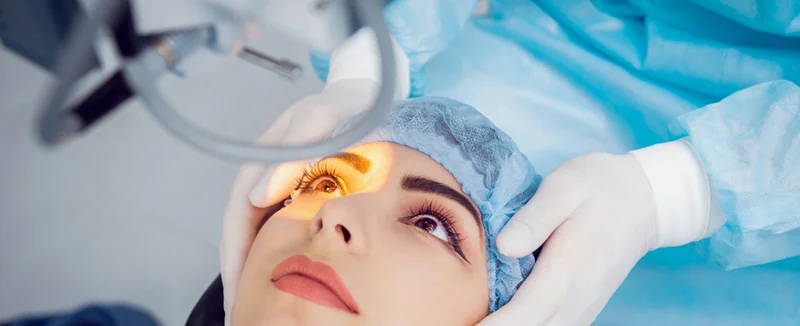Cataract Surgery With Advanced Phaco Techniques
Phacoemulsification, commonly known as phaco surgery, is a cataract removal technique that utilizes an ultrasonic handpiece to aspirate and emulsify cataracts. The broken-down pieces of the lens are suctioned out of the eye with a vacuum, and the aspirated fluids are replaced with a balanced salt solution.
The ultrasonic technique came into existence as a revolutionary technology. Prior to this, surgeons had to remove the entire lens and capsule, and people had to wear thick, heavy glasses to correct their eye power. With phacoemulsification, this was no longer needed. And with the development of intraocular lenses, lens replacement after cataract surgery became a stable part of the treatment procedure.
By far, phaco surgery is the most common type of cataract surgery. If you need to undergo phaco cataract surgery in India, contact us.
Ideal Candidate for Phaco Eye Surgery
- The individual has no other eye disease.
- The individual is not diabetic.
- The prognosis of the surgery is good.
Benefits of Phaco Surgery
- The treatment is minimally invasive.
- It is a quicker procedure than extracapsular and other techniques.
- The recovery time is quicker with minimal chances of complications.
- The lens capsule is retained which gives a stable foundation for the lens replacement.
- It is easier to find a surgeon who can perform phaco surgery with higher precision.
Phaco Surgery Procedure
Before proceeding with phaco surgery, a comprehensive eye examination is done to identify the severity of the condition and the right approach for cataract removal. The procedure is carried out in the following steps-
Anesthetic drops are used to numb the eyes and a lid speculum is placed in the eye to prevent eyelid movements.
One or two small incisions are made at the edge of the cornea.
An opening is created in the membrane that surrounds the lens.
Saline is injected into the lens capsule to separate the lens from the surrounding capsule.
The ultrasonic handheld device is used to break the part of the lens with cataracts. It emits pulses of ultrasonic waves at different speeds that break the lens fibers.
The broken lens fibers are aspirated through suction.
A replacement lens (intraocular lens) is inserted into the capsule to provide clear vision.
Usually, no stitches are required to close the incision. However, in some cases, a few stitches may be required.
The entire procedure takes around 20 to 40 minutes and is performed on an outpatient basis. The medical team provides a detailed recovery guide, and follow-up schedule before the patient is sent home.

